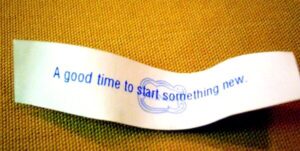
LSAs: A Creative Way to Close Employee Skills Gaps
If you’re a business or HR leader, you’re probably facing an enormous talent management challenge. Employers everywhere are struggling to retain and upskill existing employees,

If you’re a business or HR leader, you’re probably facing an enormous talent management challenge. Employers everywhere are struggling to retain and upskill existing employees,

A career, by definition, is something that develops over an extended period of time. In other words, a successful career is not born — it

Faced with increasingly turbulent economic times, businesses are rapidly learning the importance of strong leadership. The world has had enough problems dealing with the Covid-19

When you think about your future within your organization, what do you envision? Do you anticipate moving up through the ranks into a managerial or

There is no doubt employee training boosts motivation and reduces turnover. But did you know that training also provides employees greater direction, purpose, and peace
Want to let your peers outpace you? If you’re not constantly looking for ways to enhance your professional worth, you’ll soon find yourself in the

Managing career decisions can be overwhelming. But all of us face an uncertain future. What can Richard Branson’s career teach us?

How can leaders revitalize business cultures? Symbols may not seem essential, but let’s take a closer look

How can social learning create a competitive advantage for today’s organizations? Ideas you can use — from this week’s 3rd Anniversary #TChat events

The world of work is growing more complex and interesting all the time. Who are tomorrow’s leaders and how can they prepare today? Our community speaks…

Is Gen X really the “forgotten generation”? If so, what does that mean as the next wave of leaders must step in to lead the world of work?

TalentCulture is thrilled to be featured on Forbes List of “Best Websites For Your Career.” Why? In the spirit of lists everywhere, here are 3 reasons…

Think you’re ready to quit your job and strike out on your own as an entrepreneur? There may be a better path to your professional goals…
We’ve heard the term “employee engagement” a gazillion times, and one could even say it’s now just a buzzword. If you ask me, it is
Every new year is an opportunity for professional growth. Without committing to resolutions, I would like to pursue a more effective way to work…
Strategies for expanding your professional growth by cultivating diverse relationships…